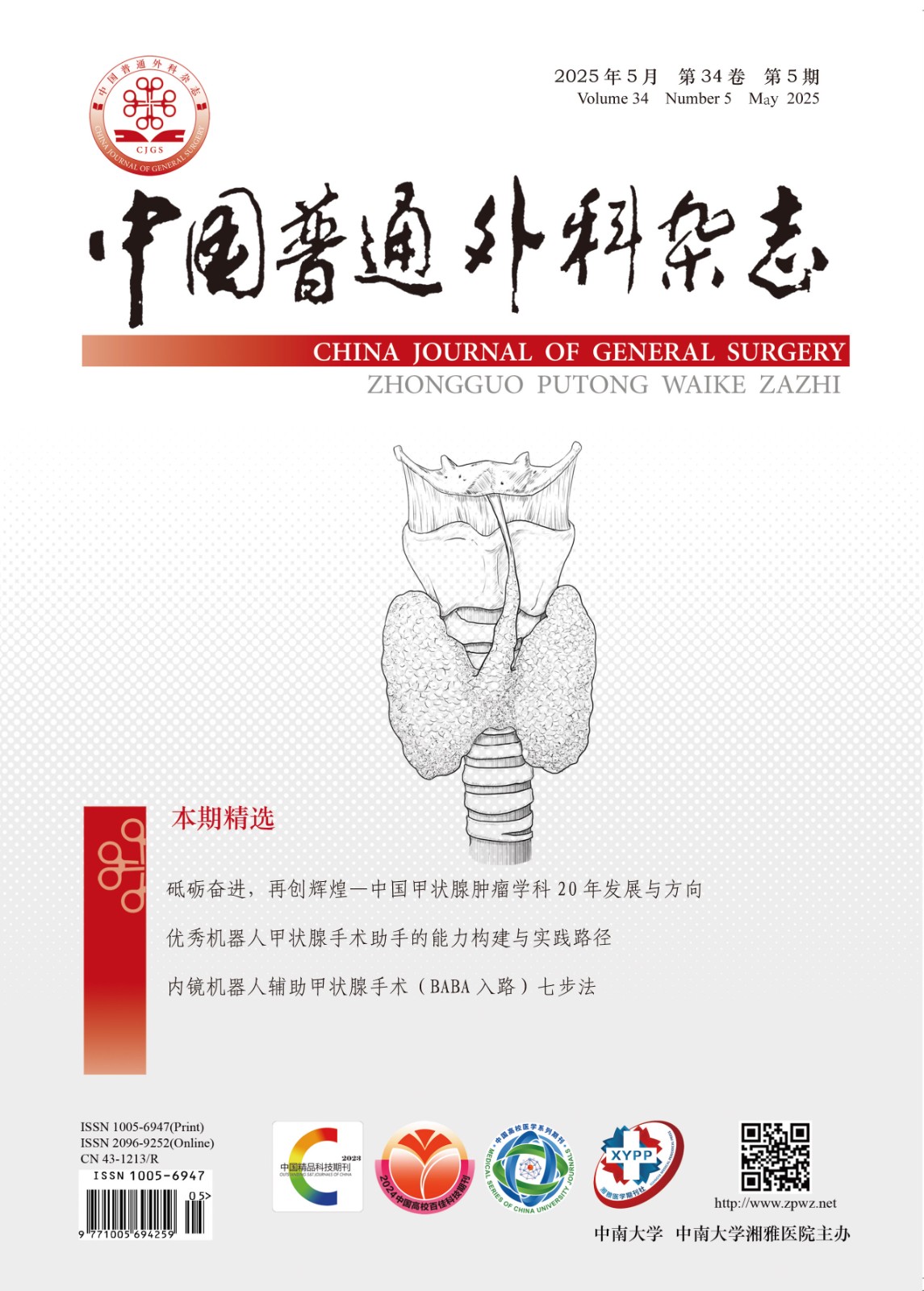Abstract:ObjectiveTo investigate the expressions of EMMPRIN, MMP1, MMP9 and TIMP1 in rectal cancer tissues and their clinicopathotogic significances. MethodsImmunohistochemical method of avidinbiotincomplex was used for four targets on the routinely paraffinembedded sections of 41 cases of surgical resected specimens of rectal carcinoma and 15 noncancerous rectal tissues in the 41 cases. Results The expression positive rate of EMMPRIN, MMP1, MMP9 and TIMP1 was 58.5%, 53.6%, 51.2% and 46.3%, respectively. The positive rate of EMMPRIN, MMP1, MMP9 and TIMP1 was 13.3%, 13.3%, 6.7% and 86.7%, respectively, and the positive rates of rectal cancer showed significant differentiation compared with those of noncancerous rectal tissues. The positive rates of EMMPRIN, MMP1 and MMP9 were significantlyhigher in cancer tissuse of poordifferentiation, infiltration of serous layer by cancer cells, maximaldiameter of mass >5cm and with metastasis of lymph nodes than that in the ones of wellor milddifferentiation, filtration of only muscular layer by cancer cells, maximal diameter of mass <5cm and withoutmetastasis of lymph nodes, but those of TIMP1 were the opposite. ConclusionsThe expression of EMMPRIN, MMP1, MMP9 and TIMP1 might be important biological markers for reflecting clinicopathologic features、biological behaviors and prognosis of rectal cancer.

